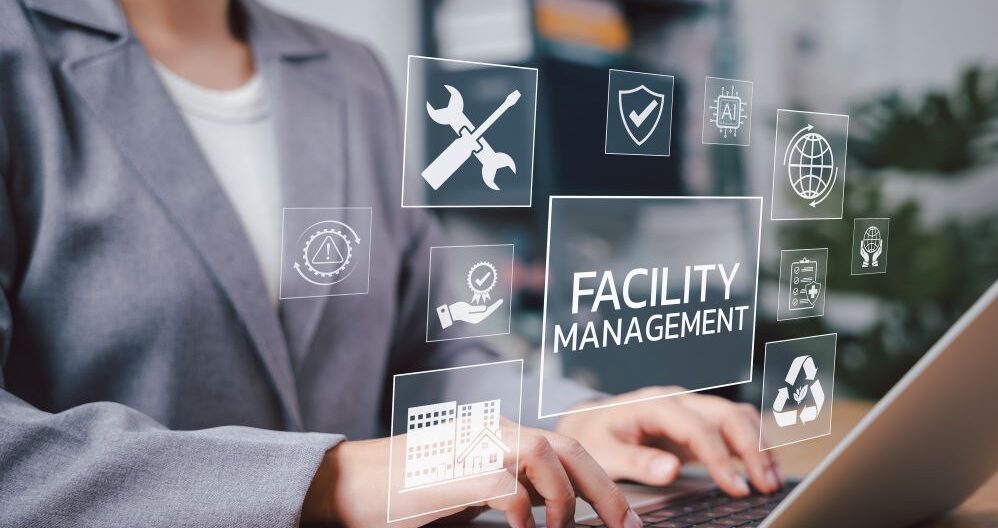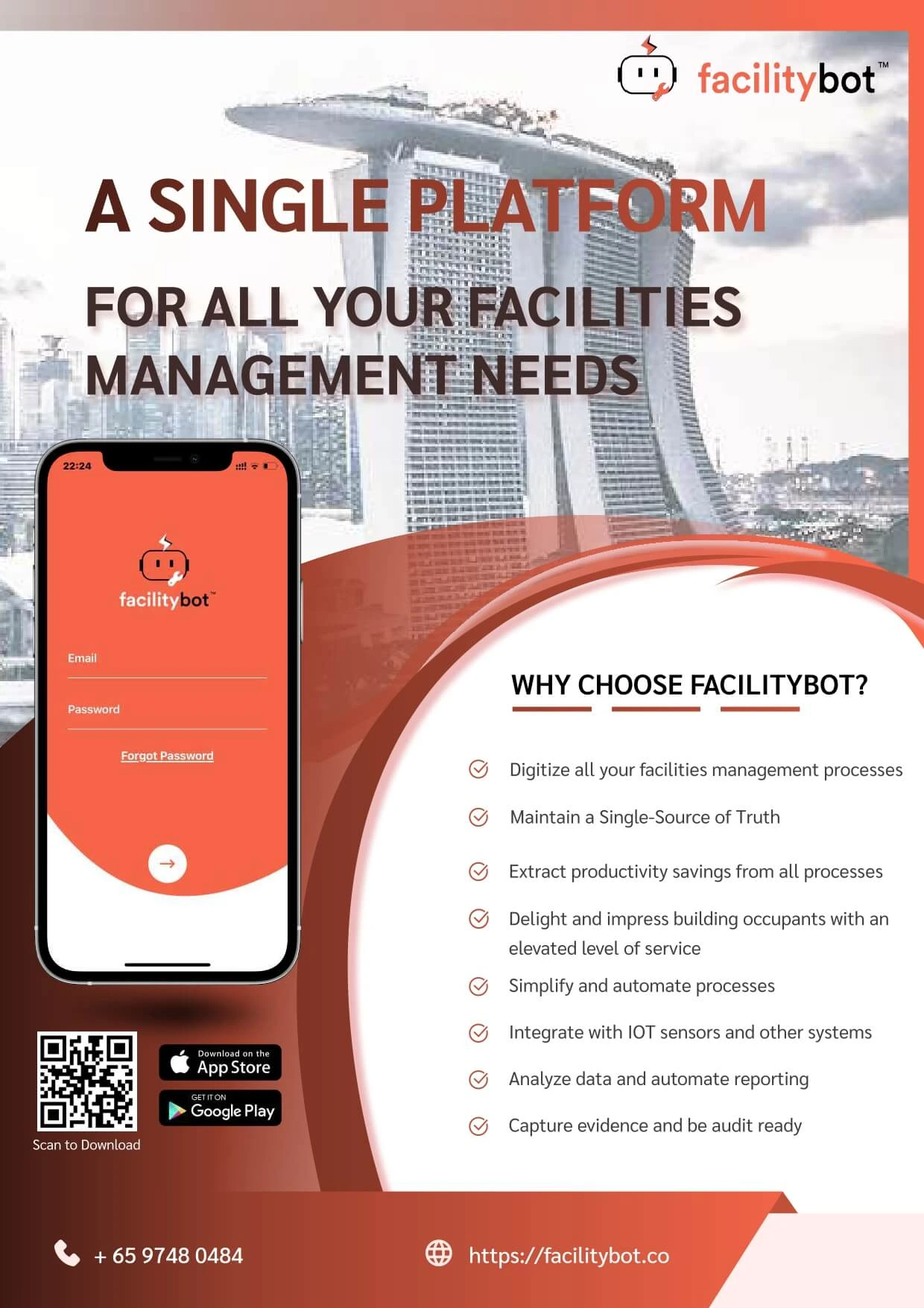Workplace safety and regulatory compliance have always been top priorities for facility managers. However, ensuring a safe and compliant work environment is becoming increasingly complex as facilities grow larger, more automated, and more data-driven.
That’s where AI safety in facility management comes into play. Artificial Intelligence (AI) is transforming how organizations monitor safety risks, manage compliance, and protect employees. By leveraging automation, predictive analytics, and real-time data, AI enables facility managers to detect hazards early, reduce accidents, and ensure compliance with industry standards.
This article explores how AI is improving workplace safety, the benefits of integrating AI-powered tools like FacilityBot, and why AI-driven compliance is essential for modern facility management.
The Role of AI in Facility Safety
AI safety in facility management involves using artificial intelligence technologies — such as computer vision, machine learning, and natural language processing — to identify, prevent, and mitigate risks in real time.
Traditional safety systems rely heavily on manual inspections, checklists, and human observation. While effective to an extent, they leave room for human error and delayed response.
AI, on the other hand, continuously monitors environments using cameras, sensors, and data analytics. It identifies potential safety threats — like water leaks, smoke, blocked exits, or equipment malfunctions — before they escalate into serious incidents.
This proactive approach ensures that safety measures are enforced 24/7, even when personnel aren’t present on-site.
How AI Enhances Workplace Safety
1. Real-Time Hazard Detection
AI-powered systems use computer vision and IoT sensors to monitor facility environments continuously. For example, AI can detect smoke, chemical leaks, or unsafe behaviors such as employees not wearing protective gear.
Once a hazard is identified, an instant alert is sent to facility managers or maintenance teams through an integrated platform like FacilityBot, ensuring rapid response.

This real-time monitoring capability significantly reduces accident rates and enhances overall workplace safety.
2. Predictive Risk Analysis
One of the greatest advantages of AI safety in facility management is its predictive capability. AI algorithms analyze historical incident data, maintenance records, and environmental patterns to forecast potential risks.
For instance, if a particular area in a warehouse has a history of equipment malfunctions or temperature fluctuations, AI can flag it as a high-risk zone and recommend preventive actions.
FacilityBot’s analytics dashboard enables managers to track these insights and plan targeted maintenance before incidents occur — creating a safer, data-informed environment.
3. Automated Compliance Management
Maintaining compliance with health, safety, and environmental regulations can be challenging, especially across multiple facilities. AI automates compliance tracking by monitoring key performance indicators and generating reports for audits and inspections.
FacilityBot simplifies this process further by centralizing compliance data. From safety checklists and maintenance logs to inspection outcomes, everything is stored in one secure platform.
This automation minimizes human error and ensures that all safety activities are documented, up-to-date, and easily retrievable — essential for passing audits and avoiding fines.
4. Intelligent Incident Reporting and Resolution
In many facilities, safety incidents go unreported or take too long to resolve due to complex manual processes. AI simplifies this by enabling intelligent fault and incident reporting.
With FacilityBot, employees or tenants can report hazards instantly via WhatsApp, Microsoft Teams, or Slack. The AI system categorizes the issue, assigns it to the appropriate technician, and tracks progress automatically.
This streamlined process ensures that safety issues are addressed promptly, reducing downtime and improving compliance rates.
5. Enhanced Emergency Response
AI plays a crucial role in improving emergency response and evacuation management. By integrating AI with building management systems, facilities can automatically trigger alarms, unlock exits, or guide occupants to the safest evacuation routes.
AI-powered facial recognition systems can even track personnel movement during emergencies, ensuring everyone is accounted for.

FacilityBot can integrate with such systems to deliver real-time alerts and instructions to facility teams and occupants, ensuring fast and organized emergency response.
How AI Supports Regulatory Compliance
Compliance is more than just a checklist — it’s an ongoing process of monitoring, documentation, and reporting. AI helps facility managers maintain compliance with occupational safety (OSHA), fire safety, and environmental standards.
Here’s how AI safety in facility management enhances compliance:
- Continuous monitoring: Ensures that safety protocols are followed around the clock.
- Automated recordkeeping: AI logs safety checks, incidents, and responses automatically.
- Data-driven audits: Simplifies compliance audits with digital, timestamped records.
- Regulatory updates: AI tools can track and alert managers about changes in local or international regulations.
Platforms like FacilityBot integrate compliance automation directly into their workflows — ensuring every maintenance, inspection, and safety activity is traceable and compliant by design.
FacilityBot: Enabling AI-Driven Safety and Compliance
FacilityBot is a leading facility management software that leverages AI and automation to simplify maintenance, safety, and compliance workflows.
Here’s how FacilityBot strengthens AI safety in facility management:
- AI-based fault detection: Identifies hazards automatically through IoT integration.
- Chat-based incident reporting: Enables staff and tenants to report safety issues instantly through familiar messaging apps.
- Automated maintenance scheduling: Ensures that safety-critical systems like fire alarms or HVAC units are serviced on time.
- Compliance dashboards: Tracks inspection status, certifications, and safety KPIs across multiple facilities.
- Data analytics: Provides real-time insights into high-risk areas, incident frequency, and safety trends.
By automating safety monitoring and compliance documentation, FacilityBot minimizes administrative overhead while maximizing workplace safety and accountability.
Real-World Example: Smart Safety in Action
Imagine a hospital using FacilityBot’s AI-powered system for safety management.
- AI sensors detect a temperature spike in the server room — indicating a possible overheating risk.
- FacilityBot automatically creates a maintenance request and notifies the on-site technician.
- The technician resolves the issue, uploads a photo for verification, and closes the task.
- The system logs the event for compliance reporting and updates the dashboard in real time.
This workflow showcases how AI prevents hazards, ensures accountability, and keeps critical infrastructure safe — without manual intervention.
Benefits of AI Safety in Facility Management
| Benefit | Description |
|---|---|
| Fewer Accidents | AI detects and prevents safety hazards before they occur. |
| Faster Response Times | Automated alerts and workflows enable instant corrective action. |
| Simplified Compliance | Automated data tracking makes audits and certifications seamless. |
| Higher Employee Confidence | Staff feel safer knowing systems are constantly monitored. |
| Reduced Liability Costs | Fewer accidents mean lower insurance and legal expenses. |
These benefits demonstrate why AI safety tools are rapidly becoming essential in facility management strategies across industries.
The Future of AI in Facility Safety
The future of AI safety in facility management looks even more promising. Emerging technologies will enhance predictive accuracy and automation. Here’s what’s ahead:
- Computer vision systems for automatic detection of unsafe behaviors.
- AI-powered drones for inspecting large or hazardous areas.
- Digital twins simulating safety scenarios for training and prevention.
- Voice-activated AI assistants guiding emergency procedures in real time.
With innovations like FacilityBot, facilities will continue to evolve toward intelligent, self-monitoring, and fully compliant environments — where safety isn’t just managed, but continuously optimized.
Conclusion
AI is revolutionizing workplace safety and compliance by turning facilities into intelligent, proactive environments. Through predictive insights, automation, and continuous monitoring, AI safety in facility management ensures that risks are identified early and compliance is always maintained.
Platforms like FacilityBot are leading this transformation, empowering organizations to manage safety effortlessly while improving efficiency and reducing costs.
In the era of smart facilities, adopting AI for safety isn’t just a competitive advantage — it’s a responsibility. The future of facility management is safe, compliant, and AI-powered.




